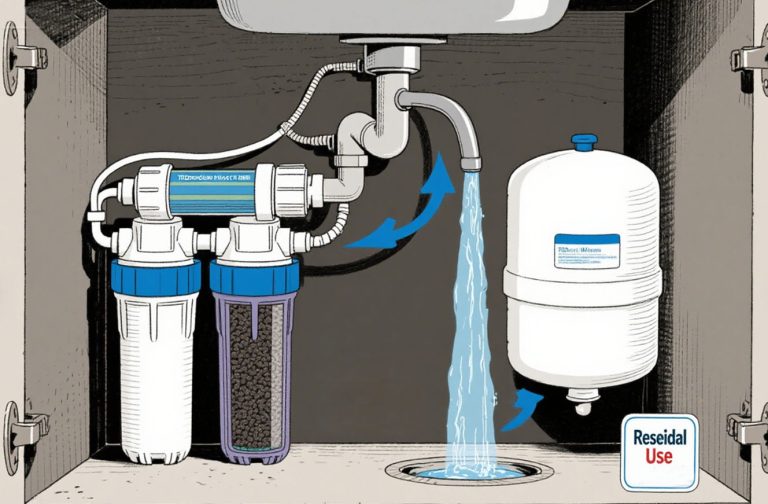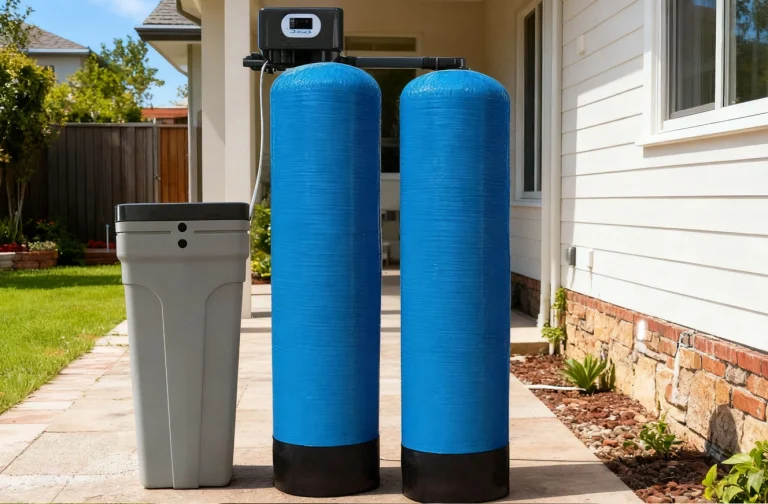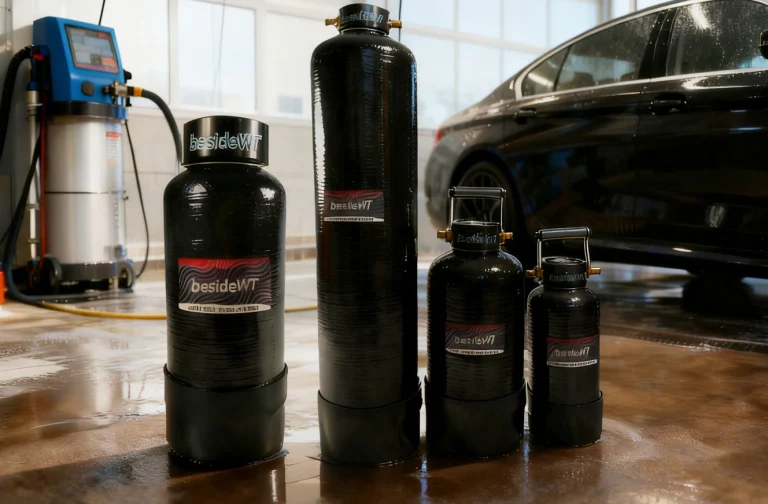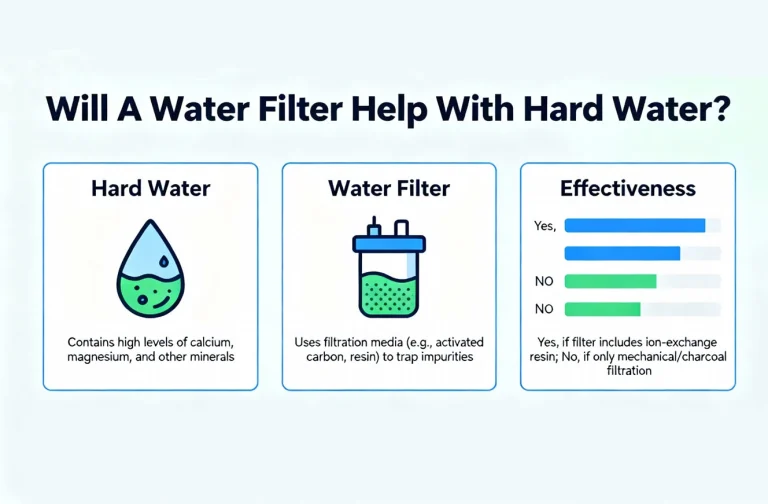BasideWT- Whole Home Water Filtration System & Replacement

How To Filter Arsenic From Water?
Imagine a threat you cannot see, taste, or smell. It might be flowing from your tap right now. Arsenic is a natural element found in the earth’s crust. It can seep into groundwater, contaminating private wells and even some public systems. Long-term exposure is dangerously linked to cancer, heart disease, and other serious health issues. This raises a critical question for millions of homeowners: how to filter arsenic from water effectively? This guide from BasideWT will provide a clear, actionable answer. We will explore the science of arsenic removal. You will learn about the most reliable technologies available. Protecting your household is not just possible; it is essential. Let’s begin by understanding the enemy.
Understanding Arsenic: More Than Just a Single Element
Before choosing a solution, you must know what you are facing. Arsenic is not a simple contaminant.
The Two Faces of Arsenic: Organic vs. Inorganic
Not all arsenic is created equal. Organic arsenic compounds are found in food like seafood. They are generally considered less toxic. Inorganic arsenic is the primary villain in water. It is highly toxic and a known human carcinogen. This is the form targeted by water treatment.
Arsenic III and Arsenic V: A Crucial Distinction
Inorganic arsenic exists in two main states, or valences: Arsenic III (Arsenite) and Arsenic V (Arsenate). Why does this matter? Arsenic V is generally easier to remove. It is negatively charged, allowing it to be captured by standard filters. However, it is worth noting that Arsenic III is more mobile and toxic. It is also more difficult to filter out. Most well water contains a mix of both. Therefore, effective treatment often requires converting Arsenic III to Arsenic V first.
The First and Most Critical Step: Test Your Water
You cannot solve a problem you haven’t measured. Guessing is not an option with arsenic.
- Do Not Rely on Taste or Smell: Arsenic is entirely undetectable by human senses. Your water could look, smell, and taste perfectly fine yet be dangerously contaminated.
- Use a Certified Laboratory: For accurate results, avoid simple home test strips. They are not sensitive enough. You must send a water sample to a state-certified laboratory. They can provide a precise concentration level for both Arsenic III and Arsenic V.
- Understand the Legal Limit: The U.S. Environmental Protection Agency (EPA) has set a Maximum Contaminant Level (MCL) of 10 parts per billion (ppb) for arsenic in public water. This is your safety benchmark. Interestingly, some health advocates argue this level is still too high.
Knowing your exact arsenic level and type is the foundation for choosing the right filter.
Effective Methods for Arsenic Removal: A Technology Deep Dive
So, what are the proven methods for arsenic removal? Several technologies exist. Their effectiveness varies based on the type of arsenic and your water conditions.
Reverse Osmosis (RO): The Point-of-Use Powerhouse
Reverse Osmosis is a highly effective method. It forces water through a semi-permeable membrane. This membrane has tiny pores that block contaminants, including arsenic.
- Effectiveness: A quality RO system can remove over 90% of arsenic, particularly Arsenic V.
- Best For: Drinking and cooking water at a single tap, like the kitchen sink.
- Limitations: RO is a point-of-use system. It does not filter water for your entire house. It also produces wastewater and requires regular membrane changes.
For many families, an RO system is the most practical answer for how to filter arsenic from water for consumption.
Ion Exchange (IE): The Whole-House Solution
Ion Exchange works like a chemical magnet. It uses a resin bead that trades harmless ions (like chloride) for harmful arsenic ions in the water.
- Effectiveness: Excellent at removing Arsenic V. It can be less effective on Arsenic III unless the water is pre-treated.
- Best For: Whole-house filtration, protecting every faucet and showerhead.
- Limitations: The resin eventually gets saturated and must be regenerated with salt or replaced. Water with high total dissolved solids (TDS) can reduce its efficiency.
Activated Alumina (AA): The Specialized Adsorber
Activated Alumina is a highly porous form of aluminum oxide. As water passes through, arsenic molecules adhere to its vast surface area.
- Effectiveness: Very effective for Arsenic V, especially at a slightly acidic pH.
- Best For: Both point-of-use and point-of-entry applications.
- Limitations: The filter media has a finite capacity. It is also sensitive to water pH. If the pH is too high, its performance drops significantly.
The Oxidation Pre-Treatment: Making “Hard-to-Remove” Arsenic Easy
Remember the challenge of Arsenic III? This is where oxidation becomes critical.
What is Oxidation?
Oxidation is a chemical process that converts Arsenic III into the more filterable Arsenic V. Think of it as preparing the arsenic for capture
- Common Oxidizing Agents: Chlorine (bleach), hydrogen peroxide, and ozone are all effective oxidants.
- The Process: The oxidant is injected into the water before it reaches the main filter. It reacts with Arsenic III, transforming its chemical structure.
Therefore, if your water test shows a significant amount of Arsenic III, a system with an oxidation pre-treatment stage is often necessary. It makes the subsequent RO, IE, or AA filter far more effective. This two-step process is the gold standard for learning how to filter arsenic from water completely.
What About Common Pitcher and Carbon Filters?
This is a vital distinction. Standard carbon filters, like those in most pitcher brands, are not designed to remove arsenic.
They are excellent for improving taste and odor. They remove chlorine and some organic chemicals. However, they lack the specific technology to reduce dissolved inorganic arsenic effectively. Relying on a standard pitcher filter for arsenic protection provides a false sense of security. You must use a system certified specifically for arsenic reduction.
Choosing the Right System for Your Home: A Practical Guide
With the science explained, how do you choose? Consider your needs and budget.
Point-of-Use vs. Point-of-Entry: What’s the Difference?
- Point-of-Use (POU): These systems treat water at a single outlet. Examples include under-sink RO systems or faucet filters. They are cost-effective for providing safe drinking and cooking water.
- Point-of-Entry (POE): These systems treat all water entering your home. They protect you from skin absorption and inhalation during showers. They are more expensive but offer comprehensive protection.
Key Selection Criteria
Ask these questions before buying:
- What is my exact arsenic level and type? (From your lab test).
- What is my water pressure and pH? Some technologies require specific conditions.
- What is my budget for installation and maintenance? Don’t forget the long-term cost of filter changes.
- Do I need whole-house protection or just at the kitchen tap?







